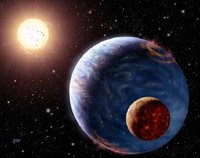
The first terrestrial-like exoplanets will likely be observed in tight orbits around low-mass stars. Conveniently, planets on these orbits receive about as much starlight as the Earth does from the Sun, and hence have to potential to be habitable. Such planets may also experience significant tidal forces from the star which can result in orbital decay, a specific planetary rotation, and significant internal heating. I describe how these phenomena are likely to impact habitability. In some cases orbital decay may result in planets moving too close to their star for habitability. For planets on non-circular orbits, rotation periods may be similar to the Earth’s and hence may produce similar atmospheric circulation patterns. Tidal heating may span the range from zero to well in excess of Io’s, and hence can dramatically impact habitability. Further complicating the situation is the presence of additional companions which may drive large oscillations in the magnitudes of these effects. Taken together these processes suggest a scheme for categorizing planetary attributes based on the planetary system’s architecture, including a refinement of the prerequisites for planetary habitability.
 Getting Under Europa’s Skin
Getting Under Europa’s Skin Tracing Formation and Evolution of Outer Solar System Bodies Through Stable Isotopes and Noble Gas Abundances
Tracing Formation and Evolution of Outer Solar System Bodies Through Stable Isotopes and Noble Gas Abundances Photosynthesis, a Planetary Revolution
Photosynthesis, a Planetary Revolution Xenon: King of the Gases
Xenon: King of the Gases